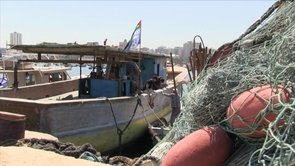Tag: Fishermen
-
Video: Gaza Ark Project 2013
27th June 2013 | International Solidarity Movement, Gal·la | Gaza, Occupied Palestine Charlie Andreasson, a member of Ship to Gaza Sweden, explains the new Gaza Ark project of this year 2013. The several unsuccessful attempts to break the siege on Gaza, imposed by Israel, from the outside to the inside made the activists think about this project…
-
Two fishermen arrested by Israeli navy and their boat confiscated
17th June 2013 | International Solidarity Movement, Rosa Schiano | Gaza, Occupied Palestine During the night of Friday, June 7, 2013 there was an escalation of attacks by the Israeli navy against the fishermen of Gaza. The Committee of the fishermen of the Union of Agricultural Workers Committees had reported attacks along the coast of…
-
‘This time we were not forced to swim naked in the sea’: Gaza fishermen left jobless after illegal arrest in Palestinian waters
1st June 2013 | Mondoweiss, Petra Stastna | Gaza, Occupied Palestine A young Palestinian fisherman was arrested together with his brother within Palestinian waters on 19 May 2013 by the Israeli navy and released the following day. Their boat and all equipment were confiscated by the Israelis, leaving them with no means to make a living.…

